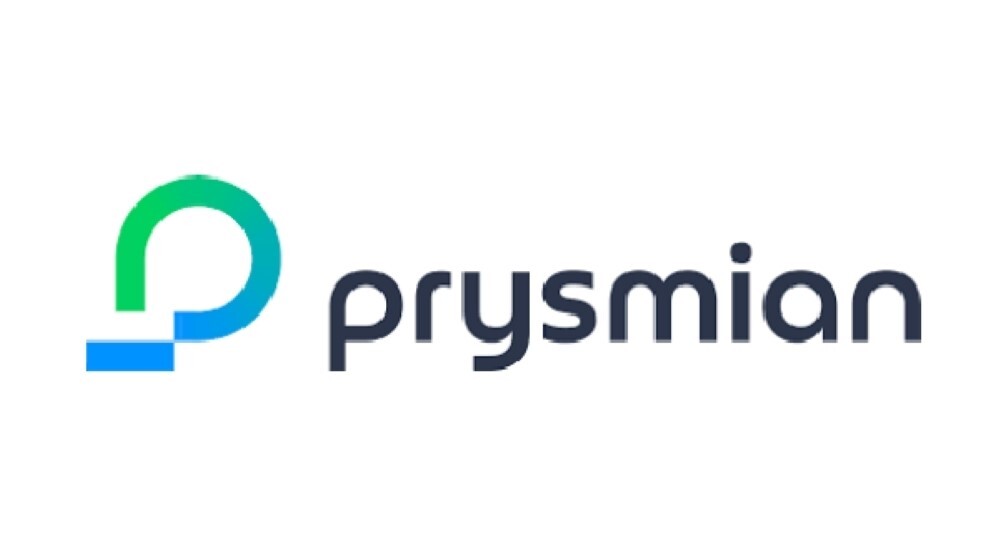

The accelerating energy transition is creating significant growth opportunities, with industry leaders adopting forward-looking strategies for long-term impact. In line with this trend, Prysmian Group, recognised globally for its power and telecom cable expertise, is driving a new phase of progress through advanced cable solutions, strategic collaborations and sustainable manufacturing practices. These initiatives not only align with Europe's decarbonisation objectives but also position the company as a key enabler in the integration of renewable energy, AI-powered smart grids and electric vehicles (EVs).

Investments in focus
Prysmian's recent investments and strategic projects highlight its critical role in advancing Europe's energy infrastructure. In 2024, the company secured a EUR 450 million (USD 490.5 million) loan from the European Investment Bank (EIB) to enhance its production capacity for extra-high-voltage submarine and onshore cables.
This capital injection has enabled the company to double output across three of its European facilities, increasing annual cable production from 2,000 km to 4,000 km. These high-performance cables are vital for long-distance grid interconnections and offshore wind developments, both integral to meeting the EU's 2030 climate objectives.
A notable example of the firm's market leadership is its EUR 929 million (USD 1.013 billion) contract signed in 2024 with Germany's Amprion to deliver high-voltage submarine cables for offshore wind farms, demonstrating the company's strong foothold in a rapidly expanding segment of the renewable energy sector.
Further strengthening its position, the firm has entered into a long-term framework agreement with E.ON to support Germany's grid modernisation efforts. This includes the supply of low and medium-voltage cables essential for enabling EV charging infrastructure, integrating solar and wind power and enhancing battery storage systems. E.ON's EUR 6 billion (USD 6.54 billion) grid upgrade initiative underscores the growing demand for Prysmian's advanced cable solutions.
Also read: Global cabling solutions provider Prysmian strikes deal to acquire Encore Wire
As per the research by Prysmian, minimum plays a vital role in voltage cables due to its favourable balance of conductivity, light weight and cost. While copper offers higher conductivity, aluminium is significantly lighter and more cost-effective, making it an efficient choice for overhead power lines and long-distance transmission.
Its lighter weight reduces structural support requirements and advancements in aluminium alloys have improved performance, making it a reliable alternative to copper in many medium and high-voltage cable applications.
Sustainability in focus
The company's sustainability-driven approach is deeply embedded in its operational framework. The company has integrated up to 50 per cent recycled polyethylene into its cable sheaths, achieving an 80 per cent reduction in carbon emissions compared to conventional materials.
Additionally, the company in its various products makes use of over 80 per cent of aluminium from low-carbon sources, while its manufacturing facilities are increasingly powered by renewable energy, including solar PV and biogas. These initiatives reflect Prysmian's alignment with the EU's circular economy objectives and the growing ESG priorities of institutional investors.
Prysmian's recent USD 950 million acquisition of Channell, a specialist in fibre-optic solutions, marks a strategic expansion of its innovative grid capabilities. By integrating fibre-optic data infrastructure with high-voltage cable systems, the company empowers grid operators with real-time monitoring and predictive analytics. This hybrid approach is essential for managing the intermittency of renewable energy sources and enhancing grid efficiency through data-driven optimisation.
Prysmian's long-term potential
The organisation's strategic alignment with global decarbonisation efforts and its role in developing critical infrastructure position it as a compelling ESG-aligned investment. Its initiatives directly contribute to the EU's REPowerEU strategy and Germany's energy transition, both supported by strong policy backing.
As the uptake of renewable energy and electric vehicles continues to accelerate, the demand for Prysmian's cable technologies and smart grid solutions is set to rise significantly.
As highlighted by Prysmian, aluminium plays a critical role in accelerating renewable energy penetration due to its lightweight, durability and low-carbon footprint. The use of aluminium, particularly from low-carbon sources, significantly reduces emissions in cable production while maintaining performance.
Its high strength-to-weight ratio makes it ideal for long-distance transmission in wind and solar projects, and its recyclability aligns with sustainability goals. Aluminium's versatility and lower environmental impact make it a key enabler in the transition to cleaner energy systems.
Financial backup
The organisation's Q1 2025 financial results underscore its solid market positioning and strategic focus on energy transition. The company reported a 15 per cent year-over-year increase in adjusted EBITDA to EUR 527 million (USD 574.43 million), alongside a 9.3 per cent rise in revenue to EUR 4.03 billion (USD 4.39 billion).
Notably, the Power Grids & Renewables division now contributes 56 per cent of total revenue, highlighting the firm's deliberate shift towards high-margin, decarbonisation-focused projects. With an order backlog of EUR 19.1 billion (USD 20.82 billion) and a net debt-to-EBITDA ratio of 1.6 times, the company maintains strong financial flexibility to pursue further investments and strategic acquisitions.
Also read: Prysmian Group wires the Fécamp offshore wind farm for uninterrupted electricity generation
Responses








